About Rev. Christopher O’Donnell, O. Carm.
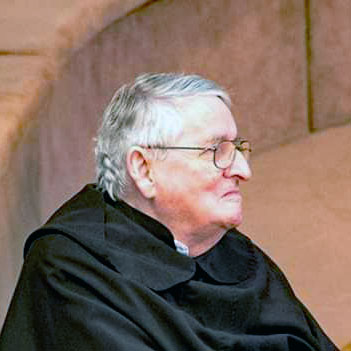 CHRISTOPHER O’DONNELL, O.Carm. — a member of the Irish Province — was senior lecturer in systematic theology at the Pontifical Milltown Institute, Dublin, and a member of the Institutum Carmelitanum in Rome. Fr. O’Donnell wrote widely on ecclesiology, spirituality and Mariology including the well-received Love in the Heart of the Church: The Mission of St. Therese and Ecclesia: A Theological Encyclopaedia on the Church. He lectured extensively in Britain, Italy, the United States of America, and Zimbabwe.
CHRISTOPHER O’DONNELL, O.Carm. — a member of the Irish Province — was senior lecturer in systematic theology at the Pontifical Milltown Institute, Dublin, and a member of the Institutum Carmelitanum in Rome. Fr. O’Donnell wrote widely on ecclesiology, spirituality and Mariology including the well-received Love in the Heart of the Church: The Mission of St. Therese and Ecclesia: A Theological Encyclopaedia on the Church. He lectured extensively in Britain, Italy, the United States of America, and Zimbabwe.
Articles by Christopher O’Donnell, O. Carm.
The following articles by Father O’Donnell about Mariology and Carmelite Spirituality are available online:
1. Advent Figures: John And Mary
Abstract:
Advent is with us once again. It comes around so soon. Like all liturgical time it is complex. In its simplest expression it is a season of preparation for Christmas. Christmas itself come about through a double process. It was a Christian substitution for the sun feast, natalis solis invicti, established by the Emperor Aurelian in 274, which celebrated the sun’s triumph over the winter solstice. It would also seem to have been a influenced by a Jewish idea that all great events m a cycle occurred on the same day, e.g. the birthday of all the patriarchs was the same. Since from about the time of Hippolytus it was believed that... continued
2. Elizabeth of the Trinity and St. Paul
Abstract:
On November 8 the Carmelite Order celebrates the Memorial of St. Elizabeth of the Trinity. Elizabeth had been reading St. Paul more and more from the beginning of 1903, the time of her profession. Her former novice mistress, Sr. Marie of the Trinity, would say that, from that time on, Elizabeth grounded herself in two authors: John of the Cross and St. Paul. With regard to the former, Elizabeth had begun by dipping into John’s works, and it was only in 1902 that she started to read him with depth and thoroughness. It was a similar case with St. Paul, who at first nourished her mind with occasional quotations like... continued
3. Introducing the Carmelite Mystics - Part 1
Abstract:
It has long been my conviction that the main crisis facing the Church is not a crisis of faith, but a crisis of religious experience. It is not that people do not believe, but they do not see the point of faith. And they drift away. Despite the enormous commitment of the Catholic Church to the renewal of liturgy, there has not been a renewed Church. One may say that the liturgical renewal is patchy and at times very defective. But those of us old enough to remember the pre-Vatican II Mass can only be struck by the contrast today of participation by the... continued
4. Introducing the Carmelite Mystics - Part 2
Abstract:
The Carmelite Mystics. In a discussion at the Carmelite general chapter in 1989, someone asked if the Church would have been much the poorer if the Carmelite Order never existed. My immediate instinct was to feel that of course the Carmelite Order, small as it is, is important for the Church; but the question niggled, did we really make any big difference? I pondered the question for weeks and months, and it gradually became clear in my mind something of the nature of the Carmelite contribution to the Church... continued
5. Introducing the Carmelite Mystics - Part 3
Abstract:
Mary and the Carmelite Mystics. In the extensive writing about the Carmelite mystics there is, I think one major lacuna. Not nearly enough attention has been given to the place of Mary in the mystical journey. On its coming to Europe in the mid-13th century, the Carmelite Order developed over a period of about 300 years several images of the Virgin. Firstly, she was Patron. The hermits chose her on Mount Carmel as their Patron by the medieval symbolism of dedicating their first church to her... continued
6. Mary Icon of the Church
Abstract:
A very easy question to ask, but a difficult one to answer is, what is the Church? Even more difficult is, what is the Church for? Try answering the first one, by completing the sentence, “The Church is...” What did you come up with? It is relatively effortless to come up with a name for the Church, such as the People of God/the Body of Christ. It is much more difficult to come up with a statement that locks into the heart of the Church.... continued
7. Mary Icon of the Church - Part 2
Abstract:
Manifested in the Paschal Mystery. In the Annunciation we have the revelation of God’s promise of an outpouring of Trinitarian love and Mary’s response. The implementation of this revelation and promise was the Paschal Mystery of the eternal Son of God. The term “Paschal Mystery” became common after Vatican II to speak about the redemption, the Eucharist and about our life in Christ. It is the mystery enacted at the Christian Passover. The word “Passover” comes from the two interconnected incidents in the Old Testament: the blood of the Paschal Lamb on the doorposts of the Israelites saved them from the destroying angel; the people could then “pass over” from the... continued
8. Mary Icon of the Church - Part 3
Abstract:
Celebrated in the Eucharist.Where is the heart of the Church? It is not in its institutions, however prestigious, even necessary. Vatican II teaches us that the “source and the summit” of the entire Christian life, and hence of the Church is the Eucharist (see Church 11). In the Eucharist we have all that is essential to the Church: we come to acknowledge that we are sinners; we hear the Word of God and respond to it; we make intercession; we share in the Paschal Mystery of the Lord’s death and glorification; we enter into intimate union with him; we are sent out to proclaim the good news and to share the love we have received.... continued
9. Mary Icon of the Church - Part 4
Abstract:
Shared with the Church. Finally, we come to that dimension of the Church which is outreach. The Church has a mission to all, so that as Pope Paul VI could state that evangelization belongs to the very nature of the Church. Indeed, as we have already seen, we are sent forth at each Mass in love, service and evangelization. Here too Mary is our icon. The story of the Visitation shows both dimensions (Luke 1:39-55). After the annunciation Mary sets out immediately, St Luke tells us “with haste” to visit her cousin, Elizabeth whom she has just learned is pregnant. Now just as there was a remarkable greeting from Gabriel to Mary, so Mary’s... continued
10. Mary and Spirituality
Abstract:
A phrase like “Marian Spirituality” is enough to make some people uneasy. Is there not just one spirituality, namely Christian? The issue is naot only extremely important but also somewhat complex.... There is a growing literature on the theme of Mary and spirituality.[1] But we need to be alert to several approaches and aspects of the theme. Spirituality is a word that has become quite chameleon:it takes on a different hue when used about various schools or movements identified by a period, place, or institution (e.g. desert, medieval, Dominican, French spiritualities). It is applied to the appropriate response of various... continued
11. Mary’s Pilgrimage of Faith
Abstract:
A pilgrimage is a journey to a holy place. The great medieval pilgrimages were to the holy places where Jesus walked: Rome sanctified by the apostles Peter and Paul, and Compostela the shrine of the apostle James. In modern times we have pilgrim places like Lourdes. Mary’s pilgrimage took her to two most holy places: Calvary, the site of her Son’s sacrifice and death; and the Upper Room, where she and the early church received the Holy Spirit.... continued
12. The Meaning of Lent with some Carmelite Insights
Abstract:
In Catholic liturgy the place to look for the meaning of a feast or a season in the prefaces of the Mass. In the first Lent preface we address the Father in these words: Each year you give us this joyful season when we prepare to celebrate the paschal mystery with mind and heart renewed. You give us a spirit of loving reverence for you, our Father, and of willing service to our neighbour.... continued
13. A Modern Presentation of Carmelite Spirituality: The 1995 Constitutions II
Abstract:
In a previous presentation we have seen our Carmelite calling sketched in broad terms. From the general call to all Christians to live in allegiance to Jesus Christ, we are called in a vowed life to following the inspiration of Mary and Elijah our models with a life-style identified as a contemplative fraternity in the midst of the people.... continued
14. Reflection on the Immaculate Conception
Abstract:
On the 25 March in 1858 the twelve-year old peasant girl, Bernadette Soubirous felt drawn to the grotto where a beautiful lady had been appearing to her frequently since 11 February that year. Bernadette asked her who she was, and the lady in white said in the local dialect, “I am the Immaculate Conception.” It would be difficult to say how much that statement might have meant to the barely literate Bernadette. The clergy knew its significance. Only four years earlier Pius IX had defined the Immaculate Conception as a dogma of faith.... continued
15. St. Joseph, a saint for our time
Abstract:
In a lovely little booklet on St Joseph, Cardinal Suenens wrote: “It has been said that the worst thing we can do to the saints is to put them on pedestals. In Joseph’s case, we might criticise not only the pedestal, but also the image of him with which we are all too often presented.” Another contemporary French writer A. Doze speaks of “misinformation” about him, and says that to misinform is to spread false rumours the better to lead people astray.... continued
16. What Is Resurrection? An Easter Reflection
Abstract:
Why are eggs associated with Easter? Why are they such a powerful symbol of resurrection? The word needs some care. It is not resuscitation, as if Jesus were simply brought back to life, like Lazarus or the widow’s son at Nam (see John 9 and Luke 7:11-15). Resurrection is transformation. The symbols of resurrection are many. So then, why eggs and Easter? An egg is totally changed. What is yellow and white liquid becomes alive with feathers and a chirp. If you look at... continued
17. The Wonder, Mystery and Message of the Crib
Abstract:
Wonder.There is a special revelation of God’s majesty in the helplessness of a child. It is a revelation of love, the same love that would leave Jesus no less helpless on the Cross. It is in part the depth of God’s love, shown in his costly involvement with humanity that is a new and radiant vision of his glory. The verb used in the preface ‘caught up’, is not precise, nor should it be. Christmas is not a matter of cold reassuring but most profoundly a matter of wonder, amazement and awe..... continued


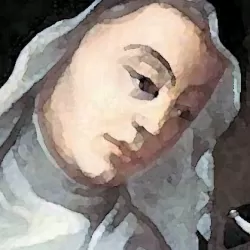
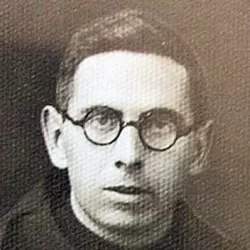
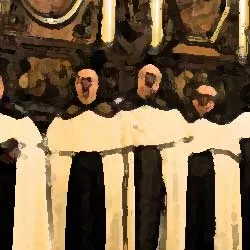

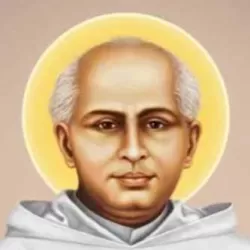
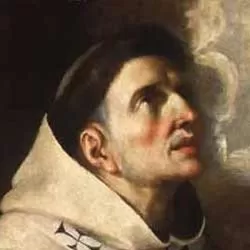
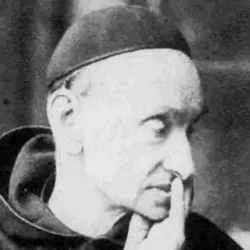


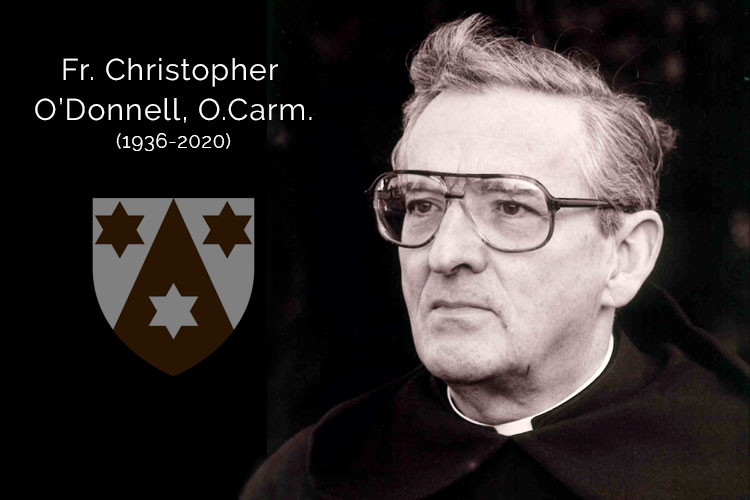
 CHRISTOPHER O’DONNELL, O.Carm. — a member of the Irish Province — was senior lecturer in systematic theology at the Pontifical Milltown Institute, Dublin, and a member of the Institutum Carmelitanum in Rome. Fr. O’Donnell wrote widely on ecclesiology, spirituality and Mariology including the well-received Love in the Heart of the Church: The Mission of St. Therese and Ecclesia: A Theological Encyclopaedia on the Church. He lectured extensively in Britain, Italy, the United States of America, and Zimbabwe.
CHRISTOPHER O’DONNELL, O.Carm. — a member of the Irish Province — was senior lecturer in systematic theology at the Pontifical Milltown Institute, Dublin, and a member of the Institutum Carmelitanum in Rome. Fr. O’Donnell wrote widely on ecclesiology, spirituality and Mariology including the well-received Love in the Heart of the Church: The Mission of St. Therese and Ecclesia: A Theological Encyclopaedia on the Church. He lectured extensively in Britain, Italy, the United States of America, and Zimbabwe. 